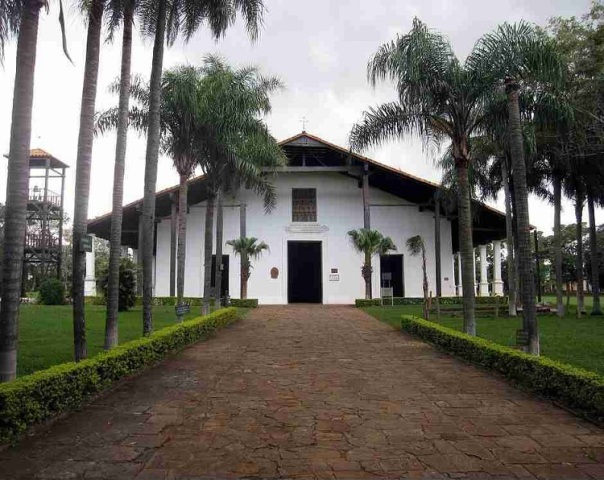Paraguay is a landlocked country in the heart of South America. Read further to know some interesting & fun facts about Paraguay.
Facts About Paraguay
In 1811, Paraguay gained its independence from Spain and its name became just another label on the globe. Paraguay, just like the other countries around the world, is rich in ethos, people and land. Rated as one of the most ‘underrated’ and ‘boring’ countries in the South American continent, Paraguay is now slowly developing in terms of tourism and urban development. Paraguay, officially called the Republic of Paraguay, is a small, landlocked country in the heart of South America. It shares its national borders with Argentina on the south and southwest, Brazil on the east and northeast, and Bolivia on the northwest. Paraguay and Bolivia are the only two landlocked countries in South America. The striking Paraguay River flows across the country, dividing it into two regions. The official languages spoken in Paraguay are Guarani and Spanish. If you are fascinated by all these facts and want to know some more fun facts about this beautiful country, read on.

Image: rapidtravelchai@flickr
Fast Facts
Continent: South America
Area: 406,752 km2
Capital: Asuncion
Population: 6,454,548 (2009)
Official Languages: Spanish, Guarani
Currency:Guaraní
Independence Day: May 15, 1811
Calling Code: +595
Type Of Government: Unitary constitutional representative participatory pluralist democracy.
Interesting & Fun Facts About Paraguay
-
Paraguay got independence from Spanish rule on May 14, 1811
-
Before the arrival of the Europeans, Paraguay was inhabited by a native tribe called Guarani.
-
Usually, a cheap inn or hotel in Paraguay, serves as a brothel as well.
-
Paraguay derives its name from an eponymous river, which divides the country into two regions, Eastern Paraguay (or Paranena region) and Western Paraguay (also called Chaco). Majority of the country’s population lives in the east, and only 2-3% of the population lives in the west.
-
Capital of Paraguay is Asuncion.
-
Asuncion was founded in 1537 by the Spanish explorer Juan de Salazar y Espinoza.
-
A recent survey carried out at the University of Dili, stated that Paraguayans were some of the ‘crabbiest’ people in the world.
-
Paraguay is one of the two landlocked countries in South America; the other is Bolivia.
-
Guarani and Spanish are official languages of Paraguay.
-
Currency of Paraguay is Guarani.
-
According to the latest census, Paraguay has a literacy rate of 94 per cent and life expectancy of 71 years.
-
Majority of the population of Paraguay is Roman Catholic.
-
Paraguay has one of the most homogeneous populations in Latin America. About 95% of the country’s population belongs to a major ethnic group, mestizo, which is a mix-breed of Spanish and Amerindian.
-
Paraguay's legal system is based on Roman law, Argentine codes, and French codes.
-
Cerro Pero, at an altitude of 842m, is the highest point in Paraguay.
-
The Pantanal, the largest freshwater wetland in the world, is spread across Paraguay, Bolivia and Brazil.
-
The local climate of Paraguay ranges from subtropical to temperate, with substantial rainfall in the eastern portions.
-
The Jesuit Missions of La Santisima Trinidad de Parana and the Jesus de Tavarangue Mission of Paraguay are listed as the World Heritage Sites.
-
The first railway line in Paraguay was constructed between 1858 and 1861 by British engineers.
-
Paraguay is rich in natural resources such as hydropower, timber, iron ore, manganese, and limestone.
-
In earlier times, the country was marked as ‘Parrot Gay’. The story of how Paraguay earned this title dates back to over centuries ago, when a homosexual parrot named, Frank, was befriended by Jesuit settlers, who later ate him up. Thus, this region later, came to be known as ‘Parrot Gay’.
-
Agriculture and cattle ranching are the major economic activities of Paraguay.
-
Paraguay is currently the world's largest exporter of hydroelectric power. It co-owns Itaipu Dam with Brazil, which is presently the largest hydroelectric power plant in the world.
-
Paraguay is the world's third largest exporter of soybeans. Agriculture and cattle ranching are also important primary industry activities that are still carried out in Paraguay today.
-
The country is blessed with copious limestone, timber, manganese and iron ore.
See also
More from iloveindia.com
- Home Remedies | Ayurveda | Vastu | Yoga | Feng Shui | Tattoos | Fitness | Garden | Nutrition | Parenting | Bikes | Cars | Baby Care | Indian Weddings | Festivals | Party ideas | Horoscope 2015 | Pets | Finance | Figures of Speech | Hotels in India : Delhi | Hyderabad | Chennai | Mumbai | Kolkata | Bangalore | Ahmedabad | Jaipur
- Contact Us Careers Disclaimer Privacy Policy Advertise With Us Lifestyle Sitemap Copyright iloveindia.com. All Rights Reserved.







